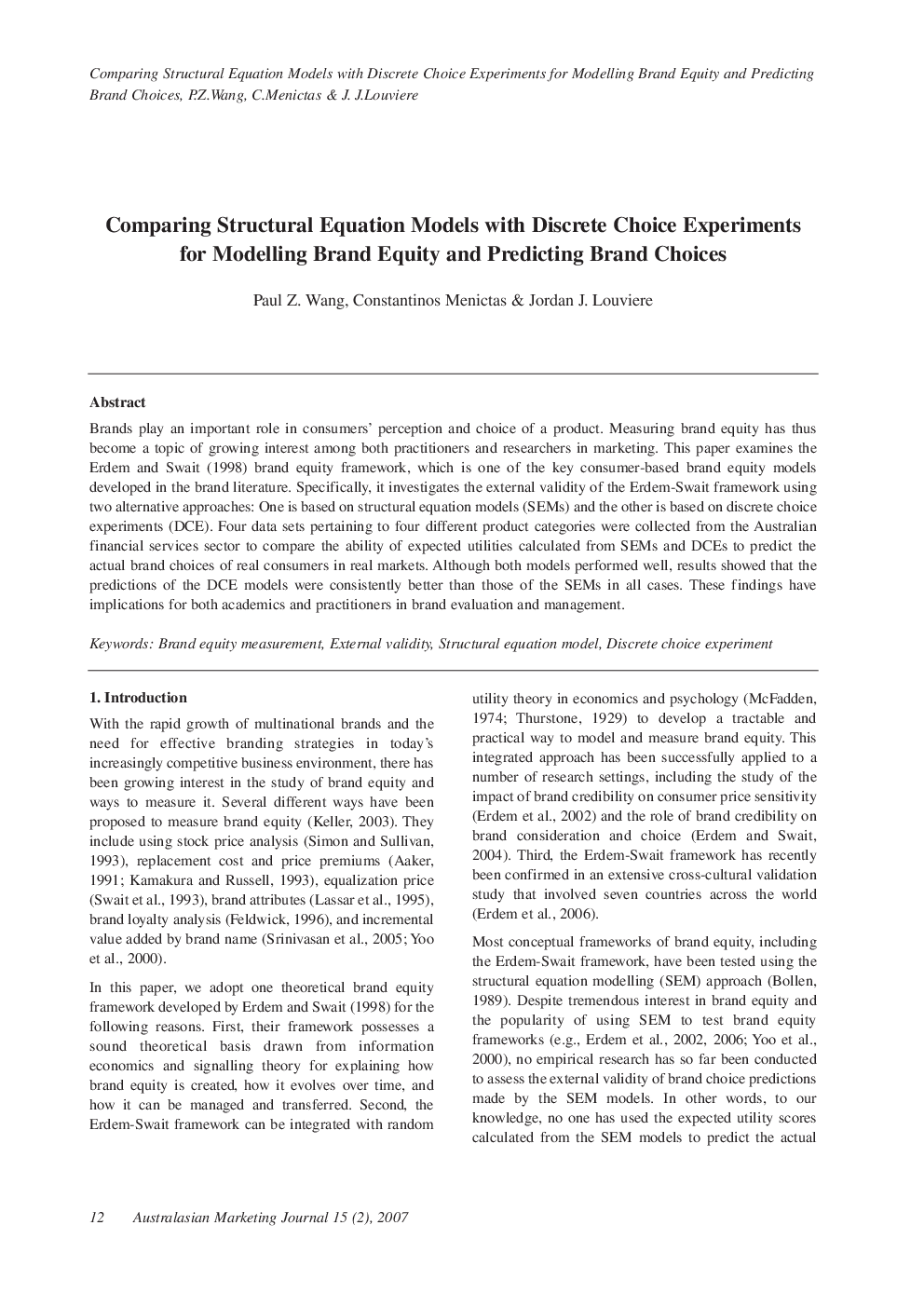| Article ID | Journal | Published Year | Pages | File Type |
|---|---|---|---|---|
| 1027298 | Australasian Marketing Journal (AMJ) | 2007 | 14 Pages |
Brands play an important role in consumers’ perception and choice of a product. Measuring brand equity has thus become a topic of growing interest among both practitioners and researchers in marketing. This paper examines the Erdem and Swait (1998) brand equity framework, which is one of the key consumer-based brand equity models developed in the brand literature. Specifically, it investigates the external validity of the Erdem-Swait framework using two alternative approaches: One is based on structural equation models (SEMs) and the other is based on discrete choice experiments (DCE). Four data sets pertaining to four different product categories were collected from the Australian financial services sector to compare the ability of expected utilities calculated from SEMs and DCEs to predict the actual brand choices of real consumers in real markets. Although both models performed well, results showed that the predictions of the DCE models were consistently better than those of the SEMs in all cases. These findings have implications for both academics and practitioners in brand evaluation and management.
